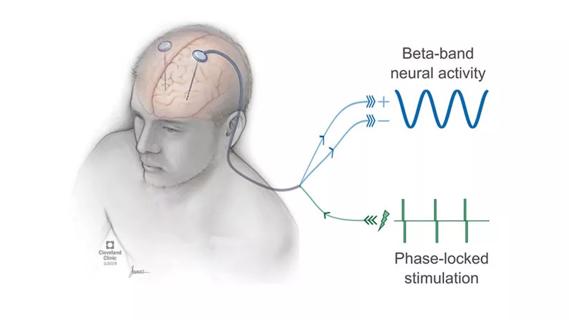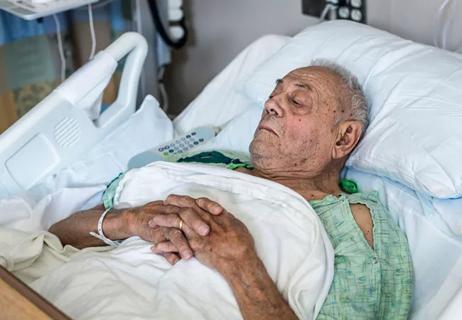New multicenter trial compares high and moderate exercise intensities

“Exercise is medicine” is a mantra in the Parkinson’s disease (PD) community, but the lack of specificity around the idea has blunted its impact to date. Now a PD researcher whose work helped establish the mantra is leading two distinct but complementary trials at Cleveland Clinic that aim to turn the concept into useful and tailored prescriptions for exercise in individuals with PD.
Cleveland Clinic is a non-profit academic medical center. Advertising on our site helps support our mission. We do not endorse non-Cleveland Clinic products or services. Policy
“The idea is that exercise can potentially spare some of the neurons at risk of dying because of Parkinson’s, and thereby slow progression of the disease,” says Jay Alberts, PhD, staff in Cleveland Clinic’s Center for Neurological Restoration and Department of Biomedical Engineering.
In the early 2000s, Dr. Alberts made a serendipitous discovery during a group bike ride with a friend who had PD. After his friend had pedaled a tandem bike with him for an extended period, Dr. Alberts noticed that her handwriting dramatically improved. That revelation fueled a series of investigations by Dr. Alberts and his lab into the impact of exercise — primarily forced cycling — on motor function in PD.
Those promising studies led to the 2019 launch of the Pragmatic Cyclical Lower Extremity Exercise Trial for Parkinson’s Disease (NCT04000360), for which Dr. Alberts is principal investigator. This ongoing National Institutes of Health (NIH)-funded study (covered previously on Consult QD) is comparing a high-intensity aerobic exercise program with indoor cycling bikes against usual and customary care among 250 individuals with PD. Effects on participants’ motor function and non-motor skills are being assessed after 12 months of intervention.
Now Dr. Alberts and Cleveland Clinic colleagues are participating in a similar multicenter investigation, the Study in Parkinson’s Disease of Exercise Phase 3 Clinical Trial (SPARX3) (NCT04284436). SPARX3, which launched earlier this year, will enroll 370 individuals with newly diagnosed PD who have not yet started dopaminergic therapy. They will be randomly assigned to 18 months of treadmill walking for 30 minutes four times a week at either high intensity (to achieve a target of 80%-85% of maximum heart rate) or moderate intensity (target of 60%-65% of maximum heart rate). Evaluators will be blinded to patients’ randomization group.
The primary outcome is change in PD motor symptoms (as measured by the Movement Disorders Society–Unified Parkinson Disease Rating Scale) at 12 months. Secondary outcome measures include (among others) changes in motor symptoms at 18 months as well as changes in dopaminergic activity, walking capacity, cognitive function, fitness, activity and quality of life at both 12 and 18 months.
“The hypothesis is that higher-intensity exercise will yield greater neuroprotection and slower progression of Parkinson’s compared with moderate-intensity exercise,” explains Dr. Alberts.
He adds that the premise behind SPARX3 is essentially the same as the one behind the NIH-funded study Cleveland Clinic is leading, with three main differences between the trials:
“Both studies work from the hypothesis that neuroprotection is likely to be triggered by high-intensity exercise involving a relatively high heart rate,” Dr. Alberts notes. He says their results should provide some much-needed guidance on what level of exercise is therapeutically beneficial in PD.
“Too often people with Parkinson’s are told that exercise is good without being given any sense of what type or how much exercise,” he explains. “Patients are given advice like, ‘If you like to garden, then you should garden.’ Now gardening is a nice physical activity, but it’s not exercise at a level that’s likely to be neuroprotective. If we want to treat exercise as medicine for this disease, we need to provide patients with an actual prescription that specifies frequency, duration, intensity and heart rate. These two studies are expected to help identify what a useful exercise prescription for Parkinson’s actually is. The great thing is that Parkinson’s patients tend to be highly adherent to their therapies. In this case we just need to determine the effective exercise therapy they should be adhering to.”
Dr. Alberts adds that SPARX3 is also notable because it has a particular emphasis on outreach to communities that are traditionally underrepresented in PD clinical trials. “We expect this study to have a patient sample that’s much more diverse and representative — racially, ethnically, socioeconomically, across the board— than most Parkinson’s disease studies,” he says.
SPARX3 study completion is expected in mid-2025. Completion of the Cleveland Clinic-led study of high-intensity cycling in PD is expected in early 2024.

Research project will leverage insights into neural circuits to advance DBS technology

Randomized trial demonstrates noninferiority to therapist-led training

Study reveals heavy care burden, missed opportunities in patients with uncontrolled symptoms on oral therapy

Also will assess ability of high-intensity exercise to offset the cognitive decline

Maintaining patients' home medication regimens looms large, study suggests

Recently launched first-of-kind study aims to address an unmet therapeutic need

Novel protocol combines gait testing during stimulation with neural signal measurement

Specialists in movement disorders, palliative care and social work join together to improve quality of life